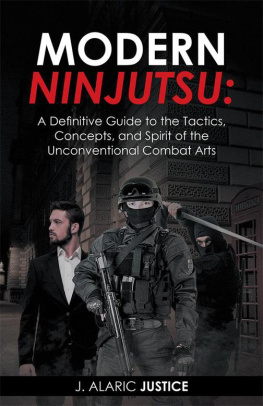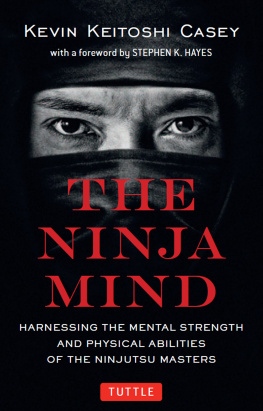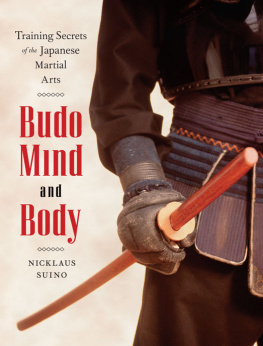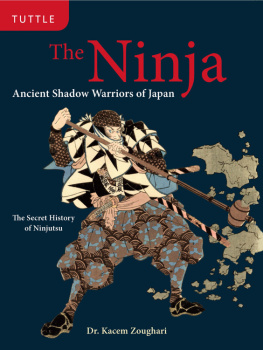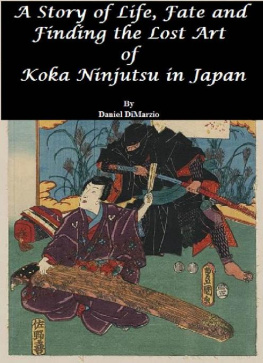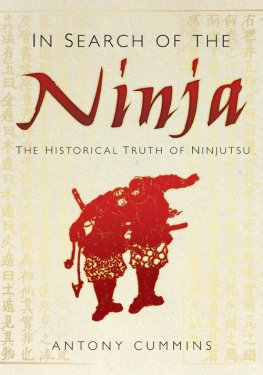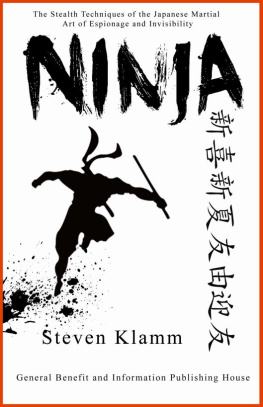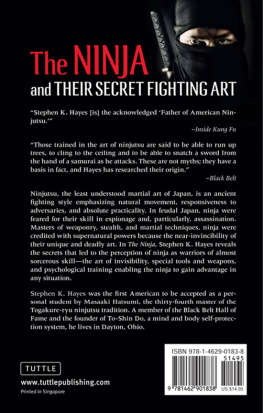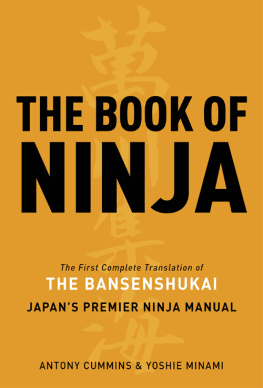Simon Yeo - Ninjutsu: The Secret Art of the Ninja
Here you can read online Simon Yeo - Ninjutsu: The Secret Art of the Ninja full text of the book (entire story) in english for free. Download pdf and epub, get meaning, cover and reviews about this ebook. year: 2008, publisher: Crowood Press, genre: Religion. Description of the work, (preface) as well as reviews are available. Best literature library LitArk.com created for fans of good reading and offers a wide selection of genres:
Romance novel
Science fiction
Adventure
Detective
Science
History
Home and family
Prose
Art
Politics
Computer
Non-fiction
Religion
Business
Children
Humor
Choose a favorite category and find really read worthwhile books. Enjoy immersion in the world of imagination, feel the emotions of the characters or learn something new for yourself, make an fascinating discovery.
Ninjutsu: The Secret Art of the Ninja: summary, description and annotation
We offer to read an annotation, description, summary or preface (depends on what the author of the book "Ninjutsu: The Secret Art of the Ninja" wrote himself). If you haven't found the necessary information about the book — write in the comments, we will try to find it.
Ninjutsu: The Secret Art of the Ninja — read online for free the complete book (whole text) full work
Below is the text of the book, divided by pages. System saving the place of the last page read, allows you to conveniently read the book "Ninjutsu: The Secret Art of the Ninja" online for free, without having to search again every time where you left off. Put a bookmark, and you can go to the page where you finished reading at any time.
Font size:
Interval:
Bookmark:
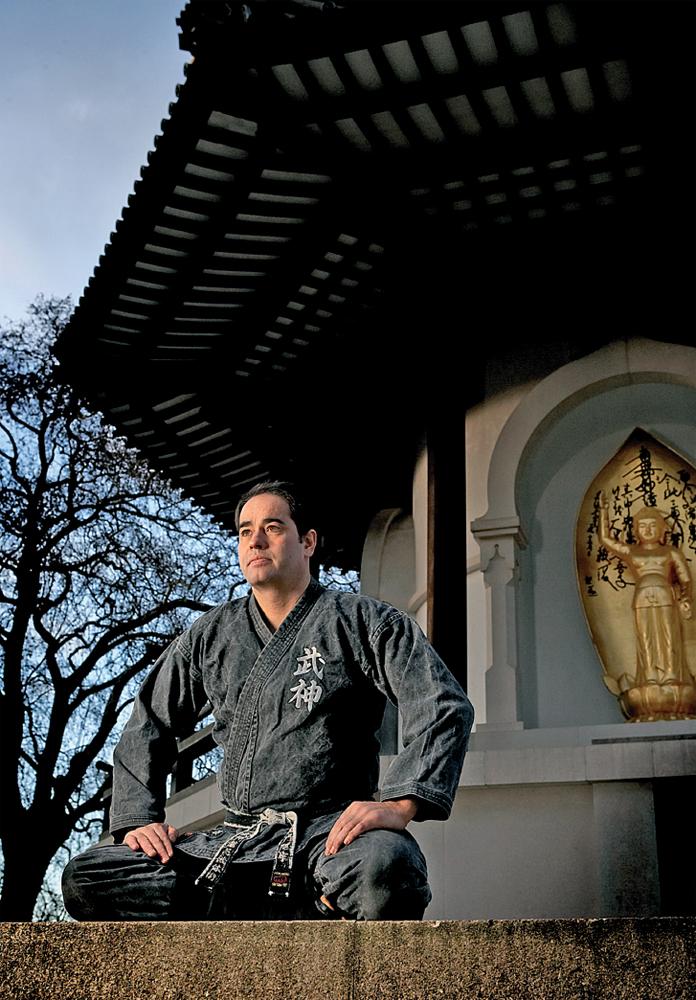
First published in 2007 by
The Crowood Press Ltd,
Ramsbury, Marlborough,
Wiltshire SN8 2HR
www.crowood.com
This e-book edition first published in 2011
Simon Yeo 2007
All rights reserved. This e-book is copyright material and must not be copied, reproduced, transferred, distributed, leased, licensed or publicly performed or used in any way except as specifically permitted in writing by the publishers, as allowed under the terms and conditions under which it was purchased or as strictly permitted by applicable copyright law. Any unauthorised distribution or use of this text may be a direct infringement of the author's and publisher's rights, and those responsible may be liable in law accordingly
ISBN 978 1 84797 370 2
Disclaimer
Please note that the author and the publisher of this book are not
responsible in any manner whatsoever for any damage or injury of any
kind that may result from practising, or applying, the principles, ideas,
techniques and/or following the instructions/information described
in this publication. Since the physical activities described in this book
may be too strenuous in nature for some readers to engage in safely,
it is essential that a doctor be consulted before undertaking training.
Acknowledgements
Everything is owed to Hatsumi Soke who sowed the seeds of thought in the
first instance. I would like to thank Ali for her love and support in my thirst
for martial knowledge, and for putting up with my weeks away pursuing
this quest; also for her help with the photos. Also my agents Jen and Jane,
for their help and encouragement. I would also like to thank my brotherin
arms, Jon Farriss, for all his encouragement, interest, and his mutually
expanding conversations that I value so much. I would also like to give
a big thank you to Paul Richardson for all his technical information and
help. Also Peter King for his friendship, for having the patience to teach me
in the first place, and for being a great travel companion. Lastly I would
like to thank Kid, my sister, for her support and help with the photos.
About the Book
In writing this book on Ninjutsu my aim is to help improve the readers mental and physical skills and reduce weakness in both these areas. This will bring a balance to them, thus addressing the equilibrium of mind, body and spirit. Issues of harmony of the mind and body will be covered, and how one can unbalance the other. Also this book will give solutions to martial artists and to the public in general; and will explain how Ninjutsu enables you to defeat someone much bigger and stronger than yourself. As well as showing you how to perform each technique, how it works the principles behind it will be revealed, so that you can see for yourself how and why it is effective. How to use effective distancing to counter speed and power will be covered; how, with good timing, you can make techniques feel effortless; and how you can take a persons balance so that the outcome of a fight is no longer determined by who is stronger or faster. Principles not previously mentioned in any other martial arts books will be disclosed.
Takamatsu Sensei, the previous Ninjutsu Grand Master, said that the techniques included in this book make up the backbone of the fighting arts. If these moves are mastered and the small details understood, the reader would really be at a very high skill level.
The previous Soke, or Grand Master, has also said that, to experience ultimate happiness, you must let go of all worries and regrets, and realize that being happy is the most satisfying of lifes feelings. He says you should reflect on all progress you have had in your life, and allow the positive, creative and joyous thoughts to outshine and eclipse any sorrow or grief that may be hiding in the recesses of your mind. He goes on to say that the key to overcoming adversity with a calm and happy spirit is being aware that disease and disaster occur as natural parts of life, and accepting this. Happiness is waiting there, before you, but only you can decide whether or not you choose to experience it.
I am also conscious that once concepts and principles are written down they become fixed. However, this is not the nature of Ninjutsu. The reader should use this book as a reference book on the way to perform the techniques in a basic way, but by no means the only way.
About Ninjutsu
The Western world has an incorrect image of the Ninja as assassins, dressed in black wearing a hood that only reveals their eyes, and running around with a sword on their back. This is largely due to all the different films and media of the 1980s that portray the Ninja in this light, and bears no relation to reality. This can also be said about the fighting styles exhibited in these aforementioned films, which are nothing more than karate mixed with acrobatics.
A Ninja is a person who has cultivated the spirit of Ninniku: that is, a compassionate heart, one who does not harbour grudges and who always seeks peace and harmony. In a famous historical Ninjutsu document called The Bansenshukai it is written that an essential trait for the Ninja is to have a pure and honest heart. It goes on to say that if a Ninja pursues a life involving lying, cheating and plotting their heart cannot be pure, and therefore their judgement will always be incorrect and their nature will never allow them to make the correct decision. A person who uses Ninjutsu for dishonest reasons or for their own personal gain may have some limited, immediate success, but will eventually be exposed for what they are. Integrity is the key point here.
It is this spiritual aspect that makes Ninjutsu so intriguing and mysterious yet it is this very aspect that is often omitted by some instructors and many other martial arts. In my opinion without this content, the practitioner is missing out on 50 per cent of the possible cultivation. If you do not consider this part of Ninjutsu, or of humanity for that matter, it will be very easy to become just a collector of techniques, with little depth of understanding and this attitude is little better than being a hoarder of things, which can include money.
The next trait is unending perserverance. The practitioner should have an extremely high level of endurance, and it is this aspect that will help the trainee succeed when normal people would not consider the task ahead possible. There is not a prerequisite for talent, as there is no correlation between talent and effort. Effort alone can defeat the most gifted master. A lack of talent should not cause you to despair, but should provoke a commitment to work with even more effort.
The last trait is to have a curious mind. This will engender good general knowledge, common sense and a critical judgement, which in turn will give the practitioner a cultural knowledge and the ability to traverse through the hierarchy of society, as well as through different cultures without exposing themselves or offending anyone. It is not enough to be intellectual, but this intellect needs to be used, along with cultural knowledge, in practical ways. If you develop intellect with a pure intent, ultimately this will lead to spiritual refinement which brings us back to the first trait.
I will discuss these traits in detail later on in this book.
About the Author
I have been studying martial arts since 1974, and these include Judo, Kyokushin Karate, Tai Chi and Pak Mei kung fu, Tae Kwon Do, traditional Jiu-Jitsu and currently Bujinkan Ninjutsu and Brazilian Jiu-Jitsu. At the time of writing I hold a 10th-degree black belt in Bujinkan Ninjutsu. I began training in Ninjutsu in 1987 after a long background in most other martial arts, and immediately felt Ninjutsu to be the art I had been looking for all along. It filled in all the gaps. I found it to be very efficient, and much more reliant on technique than on strength and power. Ninjutsu incorporates weapons, pressure points, punching, kicking, locking and throwing, which encompassed a lot of what I had learnt already, but in a more formalized form and without a lot of superfluous movement. It taught me how to use good distancing, to first take a persons balance, and then apply technique with good timing, rather than just struggle with my opponent and overpower them with strength.
Font size:
Interval:
Bookmark:
Similar books «Ninjutsu: The Secret Art of the Ninja»
Look at similar books to Ninjutsu: The Secret Art of the Ninja. We have selected literature similar in name and meaning in the hope of providing readers with more options to find new, interesting, not yet read works.
Discussion, reviews of the book Ninjutsu: The Secret Art of the Ninja and just readers' own opinions. Leave your comments, write what you think about the work, its meaning or the main characters. Specify what exactly you liked and what you didn't like, and why you think so.



